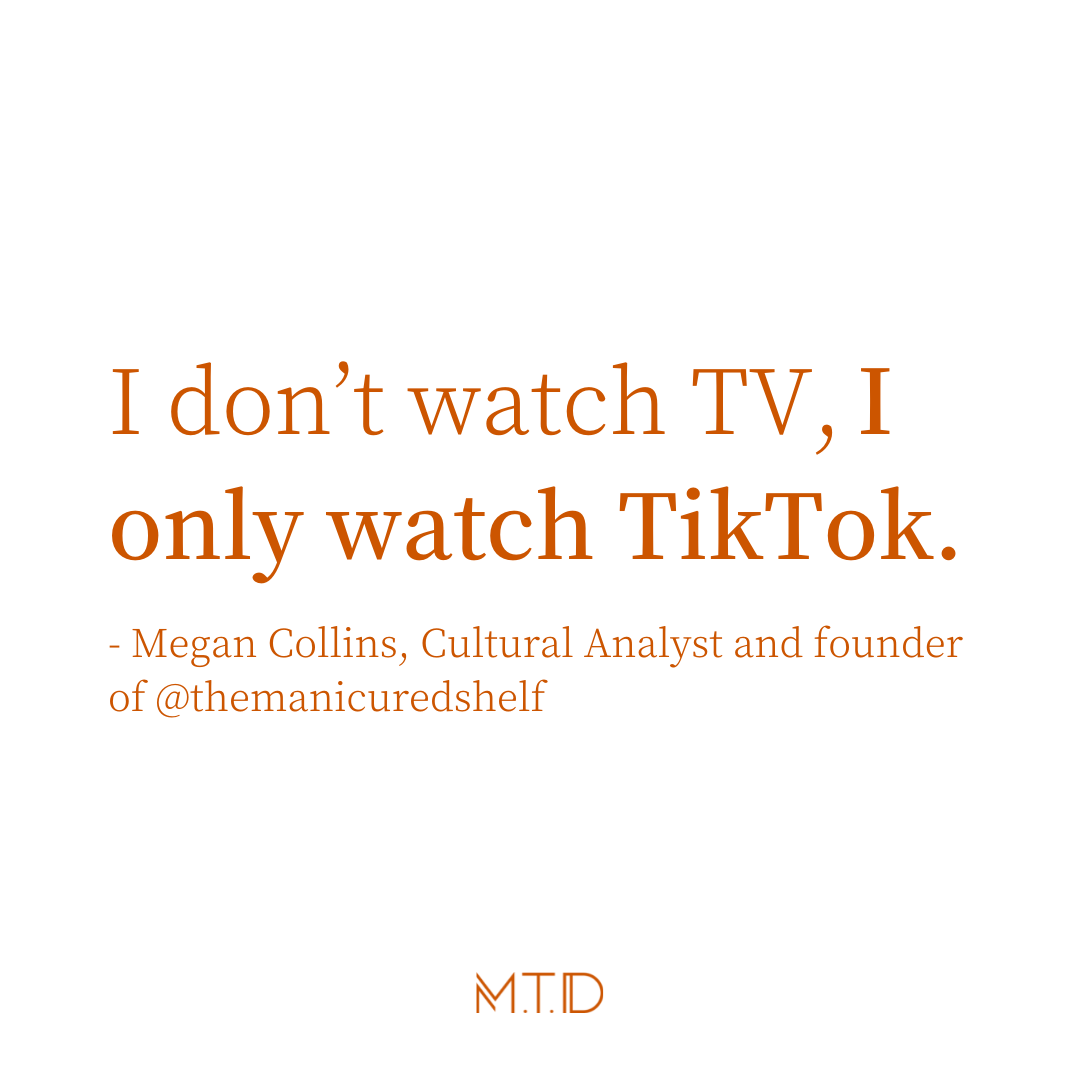Why TikTok is here to stay
It’s official, TikTok isn’t going anywhere. If you’re still a skeptic, we’re here to tell you it’s time to get with the program. For those who have been living under a rock [cough, millennials and boomers, presumably], TikTok is an app for making and sharing short-form videos. Creators of all kinds use features like filters, sounds and music to produce and score their videos. Hashtags play a large role, beyond aggregating news and conversation, since they organize around real “challenges,” like dances, cooking, memes and jokes.
There are tons of social platforms that offer similar features, but what sets TikTok apart right now is the impact it’s playing in culture. It’s the platform that matters because it has the attention, engagement and relevance among Gen Z audiences that all other platforms are striving for. How and why has it taken this top spot?
It starts and ends with the algorithm. The traditional social platforms -- Twitter, Instagram, Facebook -- were initially built around the idea of following people; our friends, public figures, that random person you met at that party that one time,. and expanded from there to conversations. After that, they began to serve up what we might be interested in, including content and product recommendations directly into our user feeds.
But TikTok has always been fundamentally different. The For You Page, or FYP, is the app’s main function and is curated by the algorithm to give you content it thinks you want. It’s not about an entire feed of content that YOU choose, it takes that control totally out of your hands. It decides what to show you based on your behavior [and yes, it gathers tons of data from you in order to effectively do this]. By serving content up this way, TikTok accomplishes a number of things that are limited on other platforms. It allows average users who are creating great content to go viral and gain a following much more easily [especially when compared to the silos users have on platforms like Instagram]. It also takes some pressure off creators to allow them to focus more on the content at hand and less on a curated, perfect feed.
Gen Z in particular, who makes up the majority of TikTok users, is the first generation to be wholly raised with the Internet. TikTok speaks to them because it’s built for online culture in a way that other platforms are not.
“TikTok is super integral to the Internet and the ‘extremely online’--anyone who is extremely engrossed in Internet culture,” says Megan Collins, cultural analyst and MTD contributor.“TikTok is a place where a lot of this Internet culture is being created.”
The TikTok culture is impactful, whether creators mean to be or not. You might say it’s more like real life. As Jon Caramanica from The New York Times writes in his piece on men’s fashion on TikTok, “More than Twitter, which primarily foments arguments; Instagram, which is polished beyond feeling; or Snapchat, which functions largely in private, TikTok is the social media app best suited to the exchange of ideas. And because of the algorithmically shaped For You page, maintaining a curated viewing experience on TikTok is nigh impossible, which means TikTok creators tend to work more improvisationally.” Quality content in the form of valuable information, storytelling, humor, music, etc. is the priority. That trickles down to high-quality subculture groups, high-quality conversation and high-quality debate.
Not convinced yet? Here are four reasons why TikTok is only going to get more significant as time goes on [and not to mention why competitors like YouTube Shorts are vying for its throne]:
The algorithm is only getting better. TikTok measures each user’s behavior every few seconds and tracks exponentially more content than any other platform, making the algorithm superior at serving up what users will like, according to Michelle Greenwald for Forbes. She goes on to state that in 1 minute, TikTok’s micro-observations track at least 5-6 user measurements, multiplied by the average 52 minutes per user, can mean 300 data points per day and 9,000 data points per month, per user. The more data, the better the algorithm.
It’s inclusive. The platform is great for smaller, niche communities and interest groups to not only find each other, but to branch off into their own space. And because TikToks are easy to make, it’s easier to invite people to join [as opposed to searching for and requesting to join groups, which is the case on most other social platforms]. Examples of micro-groups include Cottagecore, Fashion Tok, Mom Tok, Deep Tok and Thirst Tok among many more.
It’s a low bar for entry, content creation and building a community. It might look intimidating, but the app is easy to use and with the overload of challenges and trends, there’s an incredible range of potential content ideas for users right off the bat. You could join in on the baked feta pasta challenge, do one of the viral TikTok dances [or not, like the recent strike of Black TikTok creators refusing to dance for the latest Megan Thee Stallion track], DIY, fitness, unboxing, the list is endless.
There are increasing opportunities for creators to make money. In July 2020, TikTok announced it would give creators globally over $2 billion over the next three years via a Creator Fund to ensure it has great content. $1 billion of that will be in the United States. In other words, TikTok knows that the creators are essential to the platform’s success, that labor isn’t free, and that in order to keep them around, they need to build out revenue-driving opportunities.
So do yourself a favor, make an account and check out what your For You Page serves up. You’ll likely find that it may know what you want to watch better than you do.


